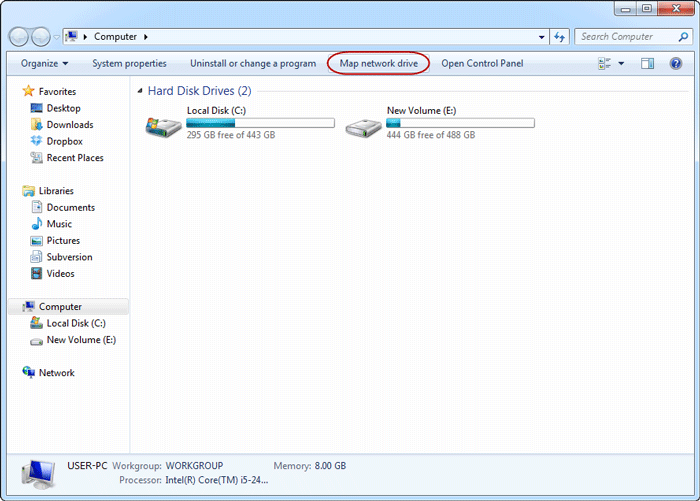

- Windows 10 synology drive mapping problems password#
- Windows 10 synology drive mapping problems windows#
Copy the script file MapDrives.ps1 to the following location:.Workaround 1: Create a startup itemĪ PowerShell window flashes up when the scheduled task runs. Executing scripts in an elevated security context will prevent mapped drives from being available in the standard user context. If($error.Count -eq 0 -Or $i -eq 0) Īll workarounds should be executed in standard user security context. Write-Host "There was an error mapping $MappedDrive.RemotePath to $MappedDrive.LocalPath" New-SmbMapping -LocalPath $MappedDrive.LocalPath -RemotePath $MappedDrive.RemotePath -Persistent $True $MappedDrives = Get-SmbMapping |where -property Status -Value Unavailable -EQ | select LocalPath,RemotePath
Windows 10 synology drive mapping problems windows#
The file should be run at a regular but not at an elevated command prompt because it should be run at the same privilege as Windows Explorer: $i=3 PowerShell -File "%SystemDrive%\Scripts\MapDrives.ps1" > "%TEMP%\StartupLog.txt" 2>&1 The file should be run at a regular but not at an elevated command prompt because it should be run at the same privilege as Windows Explorer: PowerShell -Command "Set-ExecutionPolicy -Scope CurrentUser Unrestricted" > "%TEMP%\StartupLog.txt" 2>&1 To do this, create two script files, and then use one of the workarounds, as appropriate. Currently, you can work around this issue by running scripts to automatically reconnect mapped network drive when you log on the device. Monitor the mapped drive topic in the WindUpdate History KB 4464619. Microsoft is working on a resolution and estimates a solution will be available by the end of November 2018.
Windows 10 synology drive mapping problems password#
Syncing up the username / password is another way to help smooth this over but it requires a reboot or logout / login cycle to fix it. Then you can use the above script to re-establish with a working login, and it should go away forever. You should then use net use to list all connections to that device, including the IPC$ connection and delete those. So you should clear any credentials saved in the credential manager for that resource. If that works for the test connection, but doesn't for the resource you wind up with this error. If you do not provide credentials in a net use, Windows will attempt to use whatever the user logged into Windows with first. I have a feeling that this started since we've upgraded Windows to build 2004. I wonder if anyone has encountered a similar problem.

These are of course temporary workarounds and won't solve the issue. Stopping and starting the workstation service also works. I've given them a batch file to delete the drives and re-create them. Remap one of the drives by IP, while the other was kept via DNS What I've tried following this (still unsure of the results): The following day 2 computers had the same issue only to one of the mapped drives. Remove any related saved credentials from Windows Credentials Manager Disconnect all previous connections to the server or shared resource and try again." "Multiple connections to a server or shared resource by the same user, using more than one user name, are not allowed. They, more often than note, get the following error upon starting their computers in the morning and accessing the drives: Everything was fine since approximately 5 years. PCs are not shared, so they authenticate to the NAS using the local users on Synology. There's 4 users on the NAS having R/W access to these 2 folders, which are then mapped on the PCs. Two main folders on a Synology NAS and 4 computers. One of my clients has a small office with a simple NAS setup.


 0 kommentar(er)
0 kommentar(er)
